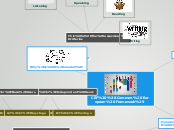CEF (Common European Framework)

Why is it needed?
Common Reference Level (6)
Breakthrough, corresponding to what Wilkins in his 1978 proposal labelled ‘Formulaic
Proficiency’, and Trim in the same publication1 ‘Introductory’.
Waystage, reflecting the Council of Europe content specification.
Threshold, reflecting the Council of Europe content specification.
Vantage, reflecting the third Council of Europe content specification, a level
described as ‘Limited Operational Proficiency’ by Wilkins, and ‘adequate response to situations
normally encountered’ by Trim.
Mastery (Trim: ‘comprehensive mastery’; Wilkins: ‘Comprehensive Operational Proficiency’),
corresponds to the top examination objective in the scheme adopted by ALTE
(Association of Language Testers in Europe). It could be extended to include the more
developed intercultural competence above that level which is achieved by many language
professionals.
Effective Operational Proficiency which was called ‘Effective Proficiency’ by Trim, ‘Adequate
Operational Proficiency’ by Wilkins, and represents an advanced level of competence
suitable for more complex work and study tasks.
What's it?
The Common European Framework provides a common basis for the elaboration of language
syllabuses, curriculum guidelines, examinations, textbooks, etc. across Europe. It
describes in a comprehensive way what language learners have to learn to do in order to use a language for communication and what knowledge and skills they have to develop so as to be able to act effectively.
The description also covers the cultural context in which language is set. The Framework also defines levels of proficiency which allow learners’ progress to be measured at each stage of learning and on a life-long basis.
This is the assesment criterias

Speaking

Listening

Reading

